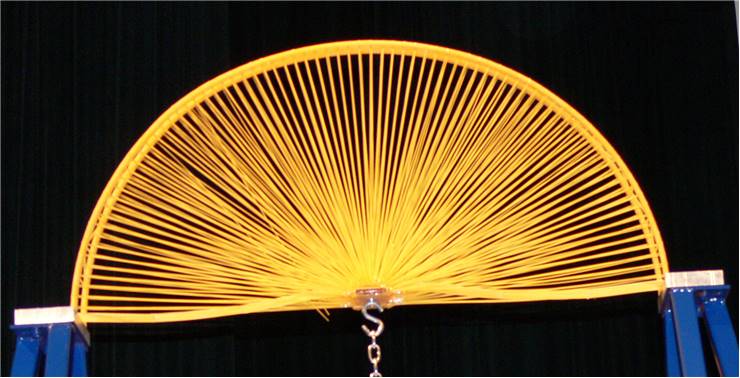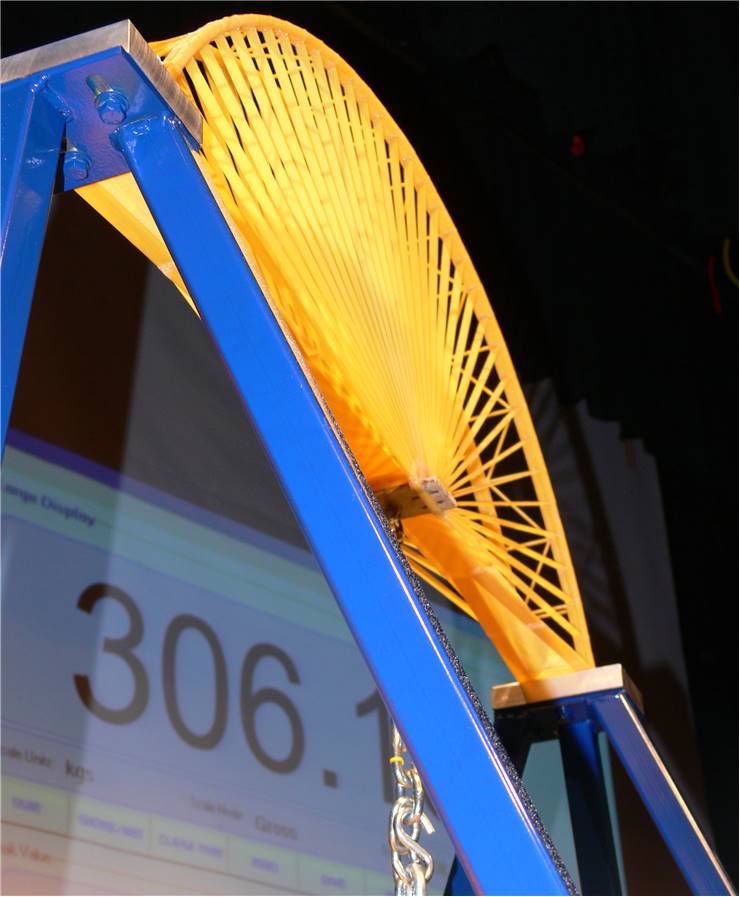Science Olympiad Bridge Building Competition
Science Olympiad (not to be confused with “International Science Olympiads” which is a separate competition with a different set of rules) is a yearly competition in which students from over 7,300 middle and high schools from the United States compete in the multiple levels of tournament competition. Best teams from each region are invited to compete against teams from neighboring regions, eventually reaching the state and national competition level where the winners fight for various awards such as medals, trophies, and plaques. Invitational tournaments are also organized.
Even though they are not officially recognized by the organization that monitors Science Olympiad, many schools around the US also have their Elementary-level competitions and tournaments that have their flexible programs. US Science Olympiad is separated into three participate age levels – Division A for elementary schools, Division B for middle school (grades 6-9) and Division C for high school (grades 9-12), with only the last two having access to organized regional and state tournaments.

The subject matter covered in Science Olympiad tournaments are usually separated into five main categories: Technology & Engineering, Physical Science & Chemistry, Inquiry & Nature of Science, Earth & Space Science and Life, Personal, and Social Science.
Most tournaments last one day, with teams that cannot exceed 15 members, with the wide variety of tests that are both knowledge-based, hands-on or engineering based. Teams have to go through a gauntlet of written or oral exams, build objects, perform chemical lab experiments, construct specific devices and more. Even though the teams can consist of up to 15 members, the majority of the events allow the only presence of two members.
One of the most popular tests with the long history of presence in Science Olympiad is, of course, the bridge building test that requires the creation of a sturdy bridge that meets the specific requirements set by the organizers. The purpose of the test is for students to get better grasps on the basic forces of compression and tension that are active inside bridge structure when the bridge is supporting a heavy load. The bridges in the 2015/2016 school year competition came in two spans – 35cm and 45cm, with both of them needing to pass the initial load test of 15 kilograms placed on the center part of the bridge structure. While the majority of the bridges are built to be placed on the even surface anchor points, during some competition years, those anchor points were uneven (most notably in 2016 season when one end of the bridge was elevated by 5 cm). This introduces much different and angled flow of forces inside the bridge structure. In addition to elevated bridge competition, Science Olympiad building events can also be of the Tower or Boomilever varieties.
Most common truss design used in Science Olympiad bridge building contests are of the Warren, Pratt and Howe types, and are made from either Balsa or Bass wood.
Balsa is used by many for its lightweight and easy to cut material properties (but it sadly cannot survive strong forces and has inconsistent density), while Bass is favored by those who want stronger material that can bend slightly during heavy load (however, Bass wood is also quite heavy and more expensive). All glue types are permitted, and joints can be of the End/Butt, Lap or Gusset varieties.
The best bridge of the competition is not the one that can carry the most load, but the one that has the best bridge weight to bridge load efficiency rating. This means that lighter and more smartly designed bridge can beat out larger and heavier bridge that can carry more load.


